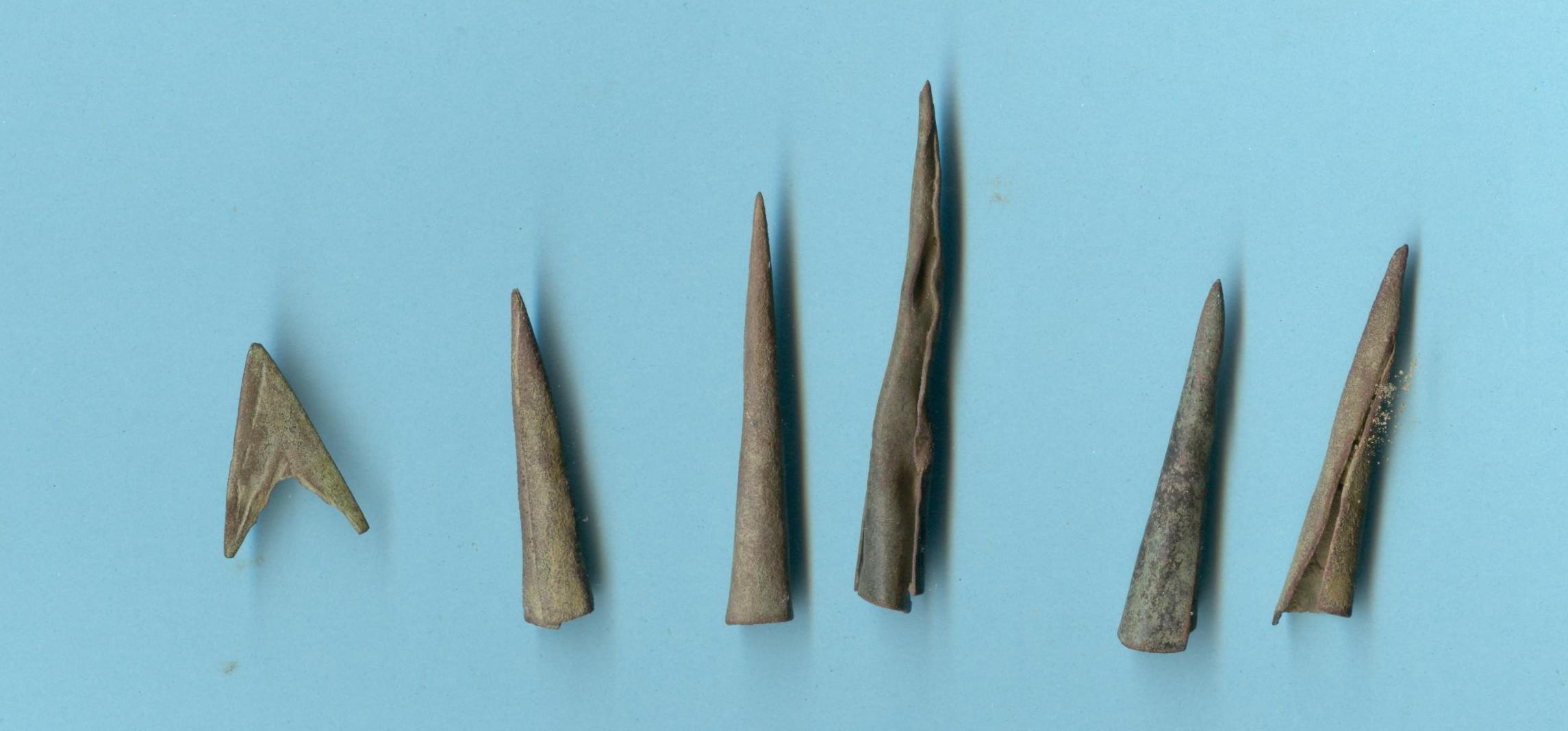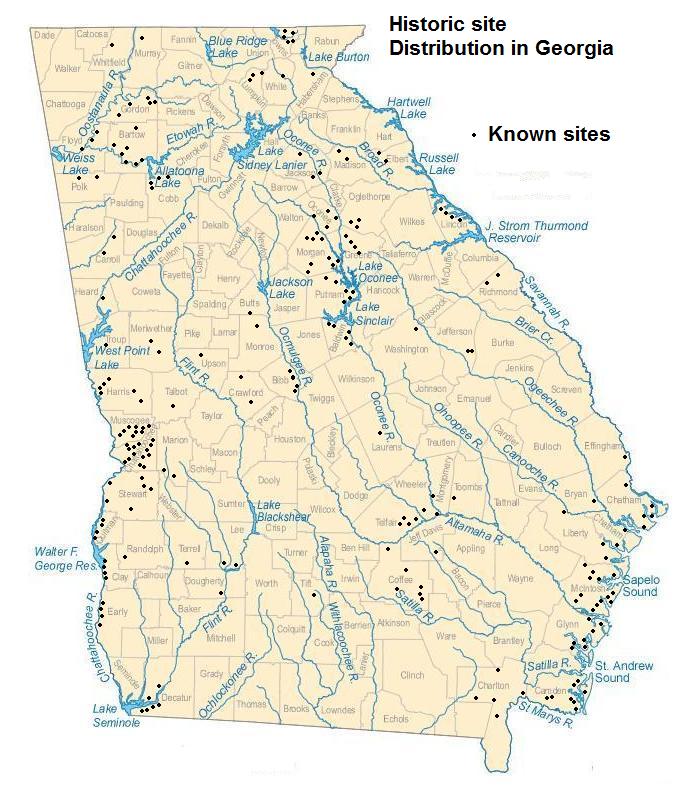
Name: One of the most common materials traded to the Native Americans during the Colonial period and early European contact was kettle brass, from which the Creek, Cherokee, and other groups fashioned conical points identified today as Kaskaskia points. The name comes from the Kaskaskia Indians of the Algonquin Federation at the Gueber site in Randolph County, Illinois.
Description: The Kaskaskia is a conical point constructed of sheet copper from boat hulls, coins, or kettle brass. Examples vary between 1 and 2.5 inches in length. Kaskaskia points were formed by hammering kettle brass around a tapered mandrel or by cutting out a triangular preform, scoring it and folding it into a conical shape. Earlier forms of this point recovered from the Gueber and Bell sites, which dated between 1680 and 1730, had small rivet holes near the basal end through which a pin could be inserted to secure the point. Those used in Georgia and Florida were held in place with gum or pitch and no rivet hole is present. The flattened sheet brass point to the left is extremely rare.
Age: The recovery of a Kaskaskia point from the Appalachee council house at the mission San Luis de Talimali site in Leon County, Florida, dating between 1649 and 1704, may be intrusive. It may also be the result of conflict between the Appalachee people and the British supported Creek tribes to the north that repeatedly raided Appalachee people, eventually destroying the council house in 1704. Kaskaskia points recovered by James Dunbar at the Ponce de Leon Springs site are reported to date between 1789 and 1836 during the Seminole occupation of that site. The bow became the primary weapon for hunting during the Seminole Wars in Florida as the tribal council of the Seminole and Miccosukee people forbade the use of rifles to avoid alerting the U.S. Army of their position.
Distribution: Kaskaskia points are a bi-product of trade between Native Americans and colonial settlers or European nations. Their association with tribal groups in Georgia would place them in sites dating after A.D. 1540. Their use would extend from that period until trade guns were made available in sufficient quantity to make them unnecessary. The map below illustrates known Native American settlements of the Historical period.
